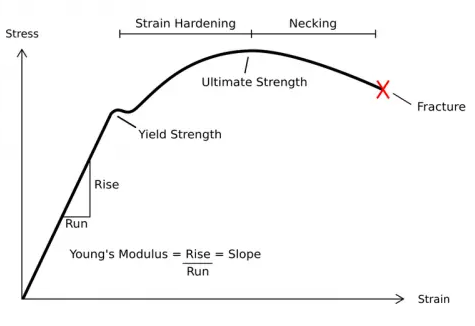Tensile Strength of Thread Bar
The tensile strength of thread bar and the compressive strength of concrete are the two main strength parameters we consider in structural designs.
We use THREAD BAR where the concrete is subjecting to tensile stresses and when it does not strong enough to act along to carry the loads.
Thus, the reinforcement steel is provided for the structural element to act together with concrete. Steel weak in compression when act along. The composite action is the best way for this issue.

What is the Tensile Strength of THREAD BAR?
The above figure indicates the typical variation of the stress and strain cure of steel.
Initially, it’s straight and after some point (we called yielding) it becomes nonlinear.
The maximum stress (ultimate stress) the reinforcement bar subjected when elongating is called the tensile strength of rebar.
This the peak and after that necking starts and then stress reduces as shown in the above figure. The tensile strength of rebar is a very important factor that we need to know in nonlinear designs.
In linear design, the strength of the reinforcement is basically considered up to the yielding. However, when we concentrated on the nonlinear designs, we used most out of the stress that THREAD BAR can be bared without failure.
Earthquake designs, desing structures for blast loading, accidental loads designs, etc mostly occupy the nonlinear range of the reinforcement steel.
Variation of Tensile Strength of THREAD BAR
There are deviations in the tensile strength or the ultimate strength of the reinforcement bars.
When the strength of the rebar increases, its elongation reduces. Thus, it takes less elongation (or strain) to reach the ultimate tensile stress.